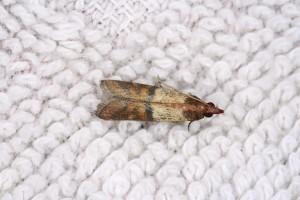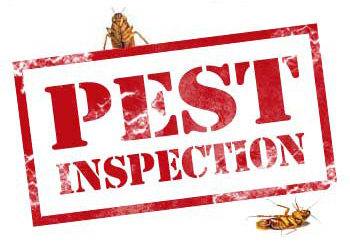
Moths: Docile Yet Destructive
For the record, moths are in fact not the most common winged pest in Portland. This accolade goes to houseflies, fruit flies, or yellowjacket wasps. However, cloth and pantry moths cause the most damage of all winged pests in Portland, so, with this criteria, and for the sake of raising awareness, moths fly to the top of the list.
Two Types of House Moths
Webbing Clothes Moths
If you’ve noticed moths fly around the house at night and aren’t sure where they’re coming from, distinguish them by observing their fluttering style; pantry moths tend to be less active and fly in a straight line whereas clothes moths are smaller with a more “fluttery” flying style. However, the most unfortunate fact about clothes moths is that they’re usually found after already destroying valuable clothing items.
As for prevention, cedar chests are ideal for keeping moths away from leather, down, and wool sweaters and coats; doubling as a mild moth repellent and tightly-sealed storage container. Moth larvae require nutrients supplied by dirt, food stains, urine, and perspiration to survive. Wash all items before storing, or at least shake out and let them sit in direct sunlight for a half hour or so.
In addition to cleaning and sealing stored clothing, be sure to vacuum carpets, floors, furniture, and dusty corners of the house. If you find moths or the cocoons on less delicate fabrics, wash each item in hot water. Placing infested clothing in the freezer works for killing the larvae as well, but is not ultimately as effective as washing.
Pheromone traps also work against clothes moths. These are usually shaped like a triangle tent and lined with a sticky film that both attracts and kills moths. Preventing their return often involves the painstaking task of vacuum-sealing all stored clothing items and blankets in vinyl bags or chests. But first, all clothing must be removed from the closet in question and machine washed or dry cleaned. If the problem persists, call a Portland pest control service. Professional exterminators can help you do a more thorough job of removal, cleanup, and prevention.
Indian Meal Moths (pantry moths)
Meal moths (also known as Mediterranean flour moths, almond moths, stored product moth, or raisin moths) are the most common moth to infest food in North American homes. Adult Indian Meal Moths can be identified by their larger size and a straighter flying motion and their bodies are about half an inch long and dusty brown in color. Their wings can have reddish brown spots on the tips and a dusting of gray near the base. Moth larvae are about a half-inch long and are usually yellow or light brown, and eggs can hatch anywhere between 30 to 275 days after being laid.
Since they thrive dried foods like birdseed, grains, crackers, pet food, and cereals that are tucked away in dark, quiet cabinets, most homes are susceptible. Fortunately, keeping them away is easy if you’re willing to seal your food packages tightly and clean out any moth-remnants from already contaminated areas.
Though they aren’t toxic or known to cause serious illness, moth larvae contaminate food more so than the visible full-grown moths because their byproducts contain dead skin and excrement. They are also capable of eating through paper packaging, so store dry goods in hard plastic or glass containers for best results.
Just like Clothes Moths, Meal Moths tend to rest in the daytime, so be sure to have the handheld zapper ready when you sit down for that nightly Netflix binge; they tend to fly around when the lights are low.
In order to prevent a moth infestation, store food in airtight containers or in the refrigerator (yes, sugars and flours can be stored in the fridge!). If moths are found in cupboards, clean them out and toss any unsealed food items in the compost.
Curious about rodents, too? Learn how much you don’t know about common rodents in Portland.

